Deux chefs-d'oeuvre emblématiques de deux périodes clés de l'histoire de la joaillerie chez Sotheby's Genève
Genève – Au mois de mai prochain à Genève, Sotheby’s offrira deux chefs-d’œuvre emblématiques de deux périodes clés de l’histoire de la joaillerie. Dans la foulée de la vente record des Bijoux Royaux de la Famille Bourbon-Parme en novembre dernier, ces deux bijoux jouissent d’une provenance prestigieuse : tous deux ont fait partie des collections de femmes influentes qui ont marqué leur temps par leur élégance et leur style.
Le premier est un sublime collier Art Déco en émeraudes et diamants certainement créé par Van Cleef & Arpels pour Hélène Beaumont (1894 - 1988), femme mondaine américaine et amie de la duchesse de Windsor. Figure incontournable de la Riviera des « années folles », les décennies 1920 et 1930, elle organisa des soirées devenues légendaires. Le collier, serti de 11 émeraudes de Colombie pesant un ensemble impressionnant de plus de 75 carats, sera offert avec une estimation de 2 890 000 – 3 980 000 CHF (3-4 millions $).
La deuxième pièce phare de la vente est une tiare de Fabergé, créée vers 1903 pour la Duchesse Cecilie von Mecklenburg-Schwerin (1886-1954), la dernière princesse héritière de Prusse. Le bijou fut offert à la duchesse par sa famille russe à l’occasion de son mariage avec le prince héritier, Wilhelm (1882-1951). Il sera présenté aux enchères avec une estimation de 200 000 – 300 000 CHF (200 000 – 300 000 $).
S’exprimant au sujet du collier, David Bennett, Président Mondial du Département International de Haute Joaillerie chez Sotheby’s, a commenté, «Il s’agit d’un bijou de connaisseur, superbe incarnation de l’Art Déco. Il est des bijoux qui enflamment la passion des collectionneurs les plus exigeants ; en voici un. J’ai découvert ce collier en émeraudes et diamants pour la première fois il y a exactement 25 ans, en 1994, lors de la vente de la collection d’Hélène Beaumont chez Sotheby’s à Genève. En vingt ans de carrière, je n’avais jamais vu de plus belle série d’émeraudes cabochon. C’est encore le cas aujourd’hui. »
« Comme l’a démontré la vente de novembre, comprenant la perle de Marie-Antoinette, les bijoux historiques peuvent nous faire voyager dans le temps. Avec cette tiare Fabergé, nous avons un autre exemple fascinant : son design Kokoshnik rappelle les origines russes de la famille de la princesse héritière Cecilie, qui lui a offert ce trésor lors de son mariage ; les portraits de Cecilie nous permettent de voir qu’elle la portait avec des robes très modernes pour le début des années 1900. Aujourd’hui, de très nombreux collectionneurs recherchent des pièces uniques, qui ont une âme – cette tiare est un vrai chef-d’œuvre. » Daniela Mascetti, Présidente du Département Joaillerie, Europe.

This May in Geneva, Sotheby’s will offer for sale two masterpieces epitomizing the craftsmanship of key periods in the history of Jewellery. Following the record-breaking sale of Royal Jewels from the Bourbon Parma Family in November 2018, both jewels have prestigious provenance: they belonged to two influential women who in their time embodied the height of fashion and elegance.
The first jewel is an Art Deco treasure, probably by Van Cleef & Arpels: a stunning emerald and diamond necklace created in the 1930s for Hélène Beaumont (1894 – 1988), an American socialite and close friend of the Duchess of Windsor. She settled on the French Riviera, where she held legendary parties and galas during the magical, hedonistic days of the 1920s and 1930s. The necklace is set with 11 immaculate Colombian emeralds weighing a total of over 75 carats, and is estimated at CHF 2,895,000 – 3,980,000 ($3 - 4 million).
The second is an exquisite diamond tiara attributed to Fabergé, which was created around 1903 for Duchess Cecilie von Mecklenburg-Schwerin (1886-1954), the last Crown Princess of Prussia, given to her by her Russian relatives on the occasion of her wedding to Crown Prince Wilhelm (1882-1951). The tiara will be offered with an estimate of CHF 200,000 – 300,000 ($200,000 – 300,000).
Speaking about the emerald and diamond necklace, Sotheby’s Worldwide Jewellery Chairman David Bennett said, “This is Art Deco at its absolute finest, a connoisseur’s jewel. Rare and exceptional pieces like these are the reason people collect Jewellery. The first time I laid eyes on this emerald and diamond necklace was exactly 25 years ago when we sold the Hélène Beaumont collection in Geneva. I said at the time that it was the most important row of cabochon emeralds I had seen during my then 20-year career. Today, 25 years on, that statement still holds true.”
Daniela Mascetti, Sotheby’s Jewellery Chairman, Europe, commented on the tiara, “As we saw last November with Marie Antoinette’s pearl, historic jewels have the power to transport us back to a moment in time. The tiara attributed to Fabergé is another perfect example: its Kokoshnik design reflects Crown Princess Cecilie’s Russian family, who gifted it to her for her wedding; from portraits we can see that she paired the tiara with her gowns in a very fashion-forward way for the very early 1900s. For so many collectors today – who seek out unique pieces with ‘soul’ - this jewel is really a masterpiece.”
L’ESSENCE MÊME DE L’ART DÉCO - “THE ULTIMATE IN ART DECO”
Ce superbe collier en émeraudes et diamants a été créé dans les années 1930 pour Hélène Beaumont (1894 - 1988), personnage central de la haute aristocratie américaine dont les fêtes légendaires dans sa Villa Eilenroc du Cap d’Antibes comptaient, parmi les illustres convives, le Duc et la Duchesse de Windsor et l’Aga Khan. Onze émeraudes hors-pair, parfaitement assorties composent ce collier. Alliées aux magnifiques diamants et au style Art Déco, elles font de ce collier l’une des plus beaux bijoux du XXème siècle.
Bien que le bijou ne soit pas signé – ce qui n’était pas inhabituel à l’époque – sa beauté et son raffinement laissent penser qu’il s’agit d’une création de Van Cleef & Arpels. La collection de Madame Beaumont comptait d’ailleurs de nombreuses créations de la maison. Le collier peut également être adapté : la partie centrale en émeraudes peut être détachée transformée en bracelet.
Created in the 1930s, this bold and exquisitely crafted emerald and diamond necklace was designed for and worn by Hélène Beaumont (1894 – 1988), a socialite and philanthropist who settled at Villa Eilenroc on the Cap d’Antibes, hosting parties in the 1920s and 30s which were attended by glamorous guests including the Duke and Duchess of Windsor and the Aga Khan.
This emblematic piece is composed of a row of 11 truly outstanding cabochon emeralds, perfectly matched both in colour and proportions. These exceptional gemstones are combined with geometric diamonds in a breathtaking Art Deco design, placing this jewel among the very finest examples of 20th -century Jewellery.
Although it is unsigned - as was not unusual at the time – its beauty and quality suggest that it was made by Van Cleef & Arpels, as were so many other pieces in her collection. In additional to being visually stunning, it is also very versatile; the central emerald and diamond sections of the necklace can be detached and worn as bracelets.
Lot 448. From the Collection of Hélène Beaumont (1894 - 1988). Magnificent and highly important Colombian emerald and diamond necklace, circa 1935. Estimate 2,985,000 — 3,980,000 CHF. Lot sold 3,620,000 CHF. Courtesy Sotheby's.
The front set with a line of graduated sugarloaf cabochon emeralds of truly exceptional quality weighing 3.57, 4.01, 4.54, 5.45, 5.63, 6.22, 6.73, 6.75, 7.03, 8.78 and 18.09 carats, alternating with hexagonal-shaped diamonds, framed with similarly cut, dart-shaped and baguette diamonds, the detachable back formed of a tapered row of marquise-shaped, oval and square-cut diamonds, length approximately 360mm, the necklace front may be worn as a bracelet and the two detachable segments were originally designed to fit the diamond bracelet, lot 521 from The Magnificent Jewels of Mme Hélène Beaumont Sale, May 1994 and transform it into a necklace.
Accompanied by SSEF report no. 105829, Gübelin report no. 19012031 and AGL report no. 1097342, all stating that the emeralds are of Colombian origin; the SSEF report stating that the emeralds are with none to a minor amount of oil, the Gübelin report stating that the emeralds are all with a minor amount of oil; and the AGL report stating that the emeralds are with an insignificant to a minor amount of oil in fissures. Together with two appendix letters from the SSEF and AGL.
Provenance: Sotheby's Geneva, Magnificent Jewels of Mme Hélène Beaumont, 18 May 1994, Lot 501.
Literature: Cf.: David Bennett and Daniela Mascetti, Understanding Jewellery, Antique Collectors' Club, Woodbridge, 1989, front cover for an illustration of this necklace.
LA TIARE FABERGÉ DE LA PRINCESSE HÉRITIÈRE CECILIE - THE FABERGÉ TIARA OF CROWN PRINCESS CECILIE
L’histoire de cette tiare est indissociablement liée à celle de la Duchesse Cecilie von Mecklenburg-Schwerin, dernière Princesse Héritière de Prusse. Son mariage avec le prince héritier, Wilhelm (1882-1951) à Berlin en juin 1905 est le plus important événement mondain du siècle naissant. Les festivités durent quatre jours et le couple est comblé de présents. Outre un superbe carrosse attelé à deux magnifiques étalons de Hongrie, offert par l’Empereur d’Autriche, Franz Joseph I, le couple reçoit de nombreux bijoux dont cette tiare attribuée à Fabergé, cadeau de la famille russe de la mariée.
La jeune duchesse rejoint ainsi l’une des plus importantes dynasties d’Europe. D’une grande beauté, avec de magnifiques cheveux noirs et des yeux perçants, Cecilie devient rapidement l’un des membres les plus appréciés de la famille impériale. Admirée pour son style, elle devient un modèle d’élégance pour toute l’aristocratie européenne.
The story of this tiara is intimately bound up with the destiny of Duchess Cecilie von Mecklenburg-Schwerin, who was to become the last Crown Princess of Prussia. In June 1905, tens of thousands of people flocked to the lavishly decorated capital, Berlin, to witness her wedding. It was the biggest social event of the still-young century. The extravagant celebrations spanned four days and the couple was showered with gifts, including silver, porcelain and even a splendid carriage drawn by Hungarian grey stallions, presented by the Austrian Emperor, Franz Joseph I. Amongst the beautiful jewels bestowed on the newlyweds was a tiara attributed to Fabergé, a stunning gift from Cecilie’s Russian relatives.
The young duchess had joined one of the most important dynasties in Europe. Strikingly beautiful, with jet-black hair and impressive dark eyes, Cecilie quickly became one of the most beloved members of the German Imperial House, particularly admired for her sense of style. Her elegance and fashion-consciousness meant that before long, her style was being copied by women across the Empire.


Lot 412. From the Collection of Her Imperial and Royal Highness Cecilie The German Crown Princess and Crown Princess Of Prussia, Duchess Of Mecklenburg-Schwerin. Diamond tiara, attributed to Fabergé, circa 1903. Estimate 200,000 — 300,000 CHF. Lot sold 437,500 CHF. Courtesy Sotheby's.
Set with three circular-cut diamonds framed with stylised laurels within an arched surround of lattice work design joined with rose diamond quatrefoils, central circular motif detachable, small rose diamonds deficient, unsigned.
Provenance: Formerly in the collection of Duchess Cecilie of Mecklenburg-Schwerin, Princess Wilhelm of Hohenzollern, Crown Princess of Prussia (1886-1954), hence by descent.
Literature: Cf.: Geoffrey C. Munn, Tiaras, A History of Splendour, Antique Collectors' Club, Woodbridge, 2001, pg. 302 for an illustration of a similar tiara attributed to Fabergé.

Crown Princess Cecilie.
It was the biggest social event of the still young century, when on 6th June 1905, Duchess Cecilie of Mecklenburg-Schwerin married Wilhelm the heir to the Prussian throne. Tens of thousands of people had poured into the lavishly decorated capital of the Empire Berlin, to witness the arrival of the bride of the Crown Prince.
Cecilie was born on 20th September 1886, as the youngest daughter of Friedrich Franz III, Grand Duke of Mecklenburg-Schwerin and Grand Duchess Anastasia Mikhailovna of Russia. The family used to spend the summers in Mecklenburg and the rest of the year in the south of France.
After the death of the Grand Duke, the Grand Duchess Anastasia did not feel the need to spend time in Mecklenburg anymore, so she and her children spent several months a year in her home country Russia instead. This intensified Cecilies bond to the Romanovs.
It was during the wedding of her Brother Friedrich Franz IV in 1904 that Cecilie met her future husband Crown Prince Wilhelm. Wilhelm was immediately overwhelmed by her beauty, the jet-black hair, the impressive dark eyes, her flawless skin and her slim figure.
In 1905 the young couple celebrated their wedding. The extravagant celebrations spanned over four days and were filled with countless commitments and appointments. The handover of the wedding gifts to the bridal couple took place in the ‘Brunswick Gallery’ of the Berlin castle. Jewels, silver, and porcelain were among the precious presents, but also a splendid carriage with Hungarian horses as a gift from the Austrian Emperor Franz Joseph I, who was a godfather of the Crown Prince. Cecilie also received many gifts from her Russian relatives. Amongst these beautiful presents, was the Tiara Lot ****, referred to within the family as the ‘Fabergé Tiara’. Fabergé was Cecilie's mothers' (Grand Duchess Anastasia Mikhailovna of Russia) favorite jeweller and correspondence between the jeweller and herself, mentioning a diamond tiara, exists. The Tiara was also featured in a newspaper article dated March 1906, reporting from an exhibition held in Berlin showcasing the wedding presents of the Crown Prince and his bride.
With this wedding Cecilie entered into one of the mightiest Dynasties of Europe. Her official title was Crown Princess of the German Reich and Prussia. Cecile, tall and statuesque, became popular in Germany for her sense of style; she quickly became one of the most beloved members of the German Imperial House. She was known for her elegance and fashion consciousness. It was not long before her fashion style was copied by many women throughout the German Empire.
La vente du 14 mai fait suite aux résultats historiques obtenus par les « Bijoux Royaux de la Famille Bourbon-Parme » en novembre dernier, notamment par des trésors ayant appartenus à la Reine Marie-Antoinette. La vente a établi de nombreux records et conforté la domination de Sotheby’s dans le domaine des bijoux de provenance aristocratique, une catégorie et un marché créés par la maison il y a plus de 10 ans et qui connaissent aujourd’hui un succès global.
The auction on 14 May builds on the success of the record-breaking sale of Royal Jewels from the Bourbon Parma Family in November 2018, which included jewels from Queen Marie Antoinette (see details here), which set new benchmarks for period jewels with extraordinary provenance, a field pioneered by Sotheby’s. Global demand for exceptional period jewels is at an all-time high, in particular those bearing the signature of the world’s most illustrious Jewellery houses.
PARMI LES AUTRES LOTS PHARES DE LA VENTE - AMONG THE OTHER HIGHLIGHTS IN THE SALE
Après la vente d’un spectaculaire diamant de 88,22 carats à Hong Kong le 2 avril, la vente de mai à Genève offrira deux diamants blancs exceptionnels. La première pierre, taille brillant, pèse 36,57 carats (Estimation CHF 800,000 – 1 200 000 / $800 000 – 1 200 000, illustrée à gauche) ; la deuxième, taille émeraude, est signée Harry Winston et pèse 18,86 carats (Estimation CHF 800 000 – 1 200 000 / $800 000 – 1 200 000, illustrée à droite). Les deux diamants sont D Colour – la couleur la plus convoitée pour des diamants blancs, et appartiennent à la rare catégorie des diamants de Type IIa, composée de moins de 2% des diamants de qualité gemme et possédant souvent une transparence optique extraordinaire. La catégorie comprend notamment les diamants légendaires Koh-i-Noor qui font partie des joyaux de la couronne britannique.
Following on from the sale of a spectacular 88.22-carat oval diamond in Hong Kong this month, the May sale in Geneva will offer two exceptional white diamonds. The first, a brilliant-cut stone, weighs 36.57 carats (Estimate CHF 4,720,000 – 5,715,000 / $4,750,000 – 5,750,000, illustrated left); the second is an emeraldcut stone by Harry Winston, weighing 18.86 carats (Estimate CHF 800,000 – 1,200,000 / $800,000 – 1,200,000, illustrated right). Both diamonds are of D Colour – the highest possible colour grading for white diamonds, and belong to the rare subgroup of Type IIa diamonds – which comprises less than 2% of all gem diamonds, including the legendary Koh-i-Noor diamonds which are part of the British Crown Jewels. Type IIa diamonds often boast exceptional optical transparency.
Lot 443. Diamond ring, round brilliant-cut diamond weighing 36.57 carats, D colour, VVS1, excellent polish and symmetry. Estimate 800,000 — 1,200,000 CHF. Lot sold 5,047,800 CHF. Courtesy Sotheby's.
Claw-set with a circular-cut diamond weighing 36.57 carats, between tapered baguette diamond shoulders, size 48.
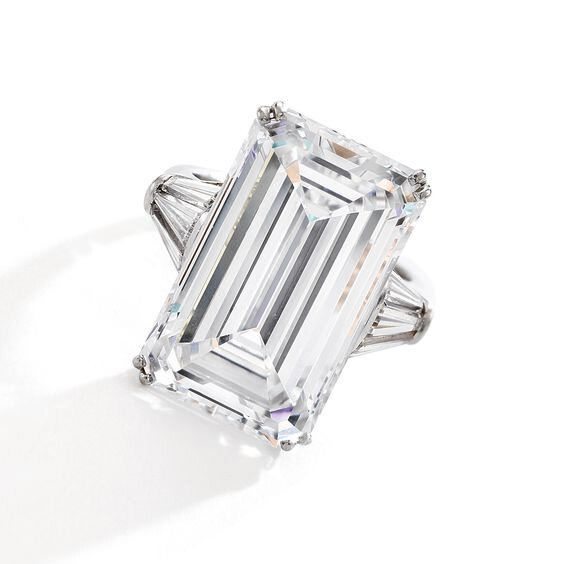
Lot 447. 18.86 carats D Colour, VVS2 Clarity Type IIa Diamond ring, Harry Winston. Estimate 800,000 — 1,200,000 CHF. Lot sold 1,460,000 CHF. Courtesy Sotheby's
Claw-set with a step-cut diamond weighing 18.86 carats, highlighted with tapered baguette diamond shoulders, size 54, signed Harry Winston.
Accompanied by GIA report no. 6204135205, stating that the diamond is D Colour, VVS2 Clarity, together with a Type IIa classification letter.
D’inspiration indienne, cette délicate épingle à jabot a été créée par Cartier vers 1925 – période considérée comme la plus importante pour la créativité de la maison. Serti de rubis ovales, diamants et onyx, le bijou témoigne de l’importante influence de l’Inde sur Cartier à cette époque : il s’inspire du sarpech, un ornement traditionnel porté sur le turban (Estimation CHF 180 000 – 280 000 / $180 000 – 280 000).
Of Indian inspiration, this delicate jabot pin was created by Cartier and can be dated to around 1925, during the period widely considered to be the pinnacle of the house’s creativity. Set with oval rubies, diamonds and polished onyx, the jewel reflects the important influence of India in Cartier’s work at this time: it is inspired by a traditional ornament which was worn o men’s turban, known as the sarpech (Estimate CHF 180,000 – 280,000 / $180,000 – 280,000).
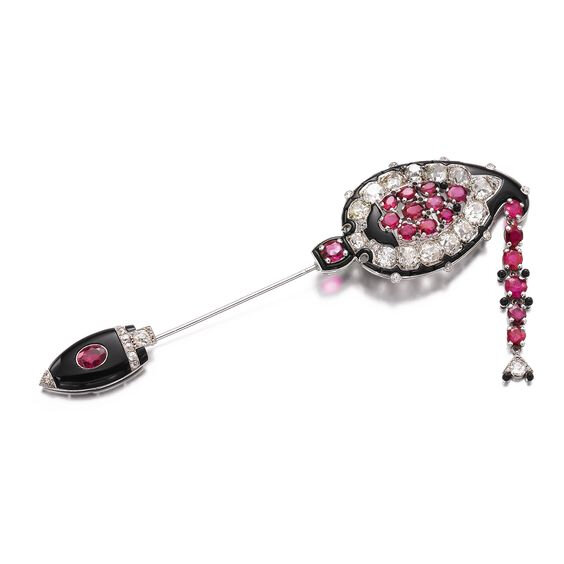
Lot 418. Onyx, ruby and diamond jabot pin, Cartier, circa 1925. Estimate 180,000 — 280,000 CHF. Lot sold 143,750 CHF. Courtesy Sotheby's
Of Indian inspiration, set with oval rubies, cushion-shaped diamonds and polished onyx, supporting a series of rubies, the keeper set with black onyx, an oval ruby and circular-cut diamonds, signed Cartier, partial maker's mark for Renault, few onyx deficient.
Cartiers’ Indian and Persian style jewels were showcased in a marvellous exhibition held at their New York Fifth Avenue premises in 1913. The exhibition comprised fifty pieces in all, of which twenty were described as ‘From Indian Art’.
Generally the role played by the Indian style in Cartier’s work can be broken down into four aspects. Firstly, there were the commissions received by Indian clients and their influence on the design of other Cartier pieces; secondly, the use of carved Mughal emeralds and other stones imported from India; thirdly the import of Indian antique and modern jewellery which Cartier resold unaltered, and lastly, Cartier’s creation of a fashion for Indian-style jewellery among non-Indian clients.
This jabot pin is one of these Indian inspired creations. The towering sarpech (jiqka) and the drooping turah, both Indian turban ornaments, influenced jewellery designers in Paris, London and New York. The principal component of the sarpech is the Kashmir palm (boteh) or mango leaf, a cone shape bent over at the point, found in Persian Mir and Serabend carpets. From 1912 the mango leaf inspired the basic shape of the Cartier version of the fashionable aigrette. In the 1920s, it was adapted with a drop stone dangling from its tip to be worn as lapel and hat brooches.
Se démarquant également parmi les lots de la vente, ce magnifique collier en émeraudes et diamants fut créé par Janesich vers 1920. Il se distingue par ses émeraudes délicatement sculptées représentant des grappes et des feuilles de raisin. Fondée en 1835 à Trieste, la maison Janesich était particulièrement appréciée par l’aristocratie autrichienne et plus tard par la bourgeoisie italienne. Aujourd’hui encore, la maison reste connue pour la création de bijoux merveilleux (CHF 250 000 – 350 000 / $ 250 000 – 350 000).
Also standing out among the highlights in May is a beautiful emerald and diamond necklace created by Janesich in around 1920. Founded in 1835 in Trieste, the Janesich firm was a favourite of the Austrian aristocracy, and later of the Italian bourgeoisie. To this day, the house enjoys renown for creating marvellous jewels, as illustrated by this piece with its delicately carved emeralds depicting bunches of grapes and leaves (Estimate CHF 250,000 – 350,000 / $250,000 – 350,000).
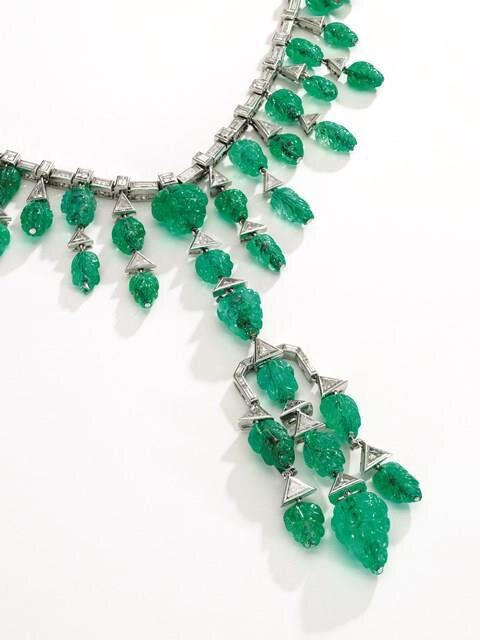
Lot 430. Emerald and diamond necklace, Janesich, circa 1920. Estimate 250,000 – 350,000 CHF. Lot sold 312,500 CHF. Courtesy Sotheby's.
Designed as a series of collet-set square and baguette diamond links, suspending a fringe and a central pendant of carved emeralds depicting bunches of grapes and foliate motifs, length approximately 495mm, signed Janesich, numbered, French assay mark for gold, maker's mark for Profillet, fitted case stamped Janesich, one emerald deficient.
The 1920’s and 30’s were a particularly rich and productive period for the firm and they excelled at producing both jewellery and accessories in the fashionable modern style that would become known as Art Deco. Janesich is predominantly known for his Jewellery of this period, such as the emerald and diamond necklace, Lot 430.
Today the business is still operating in Trieste, run by Francesco, the sixth generation of Janesich to head up this family firm with its rich history of beautifully designed and crafted fine jewels and accessories.
Ce sublime saphir vient du Cachemire – l’origine la plus recherchée sur le marché pour cette gemme en particulier – et pèse 8,35 carats (Estimation CHF 450 000 – 650 000 / $450 000 – 650 000).
The central sapphire in this stunning ring is from Kashmir – the most sought-after origin for this particular gemstone – and weighs 8.35 carats (Estimate CHF 450,000 – 650,000 / $450,000 – 650,000).

Lot 446. 8.35 carats Kashmir Sapphire and diamond ring. Estimate 450,000 – 650,000 CHF. Lot sold 644,000 CHF. Courtesy Sotheby's.
Claw-set with a cushion-shaped sapphire weighing 8.35 carats, between step-cut diamond shoulders weighing 1.70 carats each, size 501/2, Swiss assay mark.
Accompanied by SSEF report no. 91243 and Gübelin report no. 17090040, each stating that the sapphire is of Kashmir origin, with no indications of heating.
Also accompanied by GIA reports no. 2218209665 and no. 1203308149, each stating that the diamonds are G colour, VVS2 and VS2 respectively, Excellent Polish and Symmetry.

/https%3A%2F%2Fprofilepics.canalblog.com%2Fprofilepics%2F1%2F0%2F100183.jpg)
/https%3A%2F%2Fstorage.canalblog.com%2F03%2F02%2F119589%2F96711876_o.jpg)
/https%3A%2F%2Fstorage.canalblog.com%2F11%2F31%2F119589%2F94773502_o.jpg)
/https%3A%2F%2Fstorage.canalblog.com%2F20%2F83%2F119589%2F94772815_o.jpg)
/https%3A%2F%2Fstorage.canalblog.com%2F26%2F72%2F119589%2F75604929_o.jpg)
/https%3A%2F%2Fstorage.canalblog.com%2F59%2F60%2F119589%2F26458628_o.jpg)
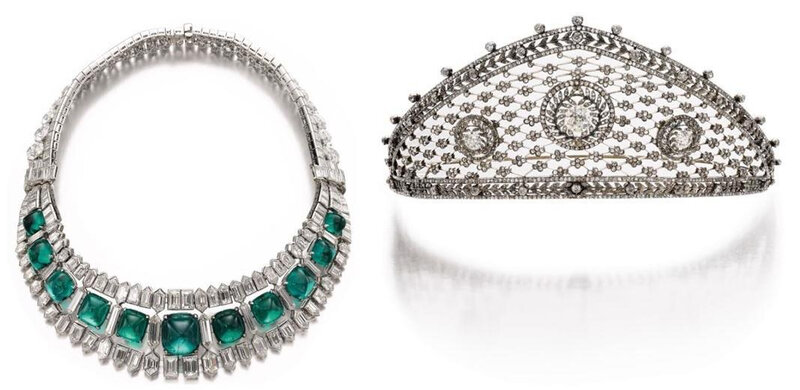
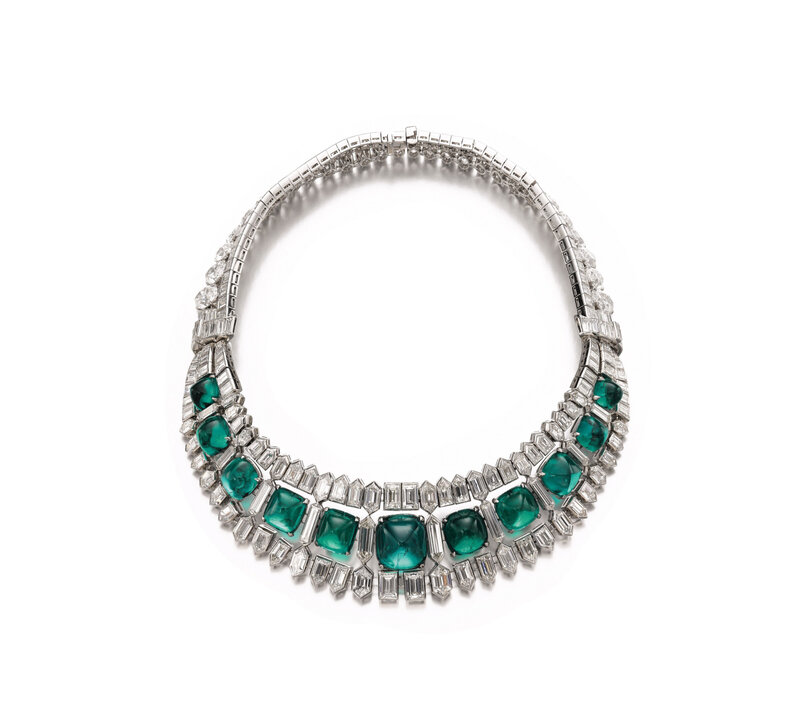
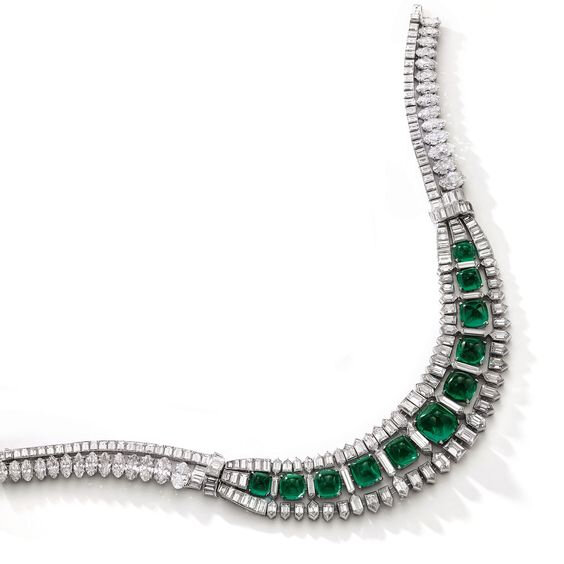

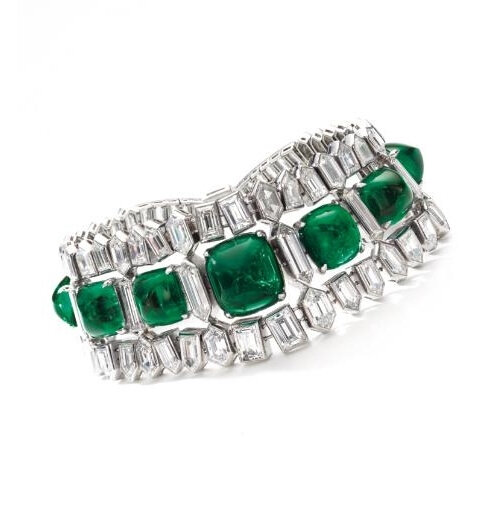
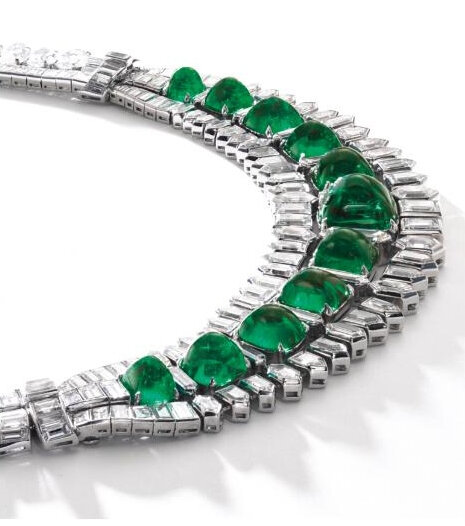



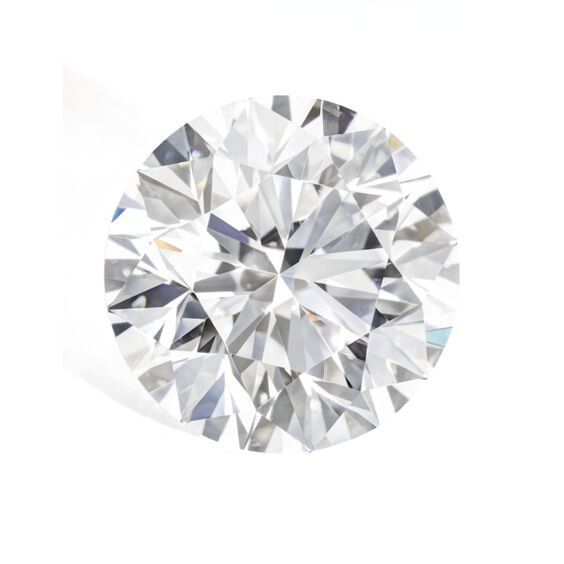
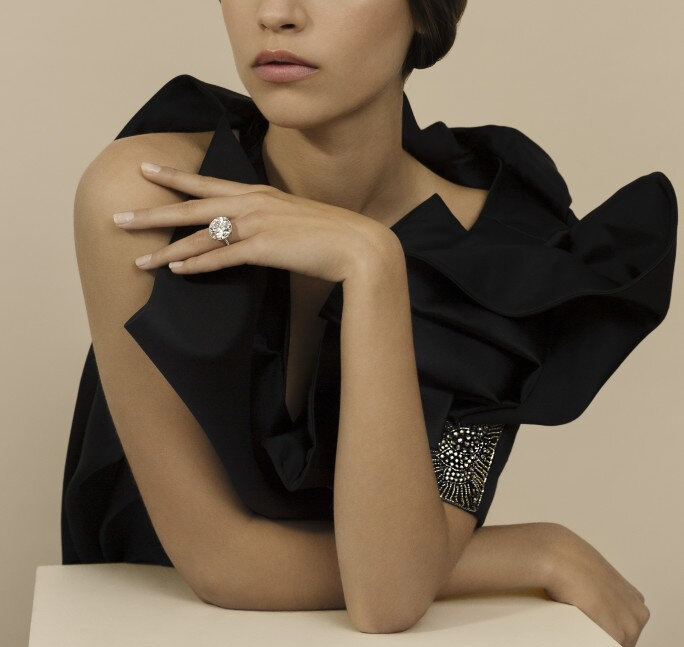



/image%2F1371349%2F20240315%2Fob_456a00_f12fdad5-0750-48f5-ae8f-7bd6836745f7.jpg)
/http%3A%2F%2Fstorage.canalblog.com%2F86%2F67%2F119589%2F129815803_o.png)
/http%3A%2F%2Fstorage.canalblog.com%2F40%2F54%2F119589%2F128112000_o.jpg)
/http%3A%2F%2Fstorage.canalblog.com%2F97%2F36%2F119589%2F128062654_o.png)